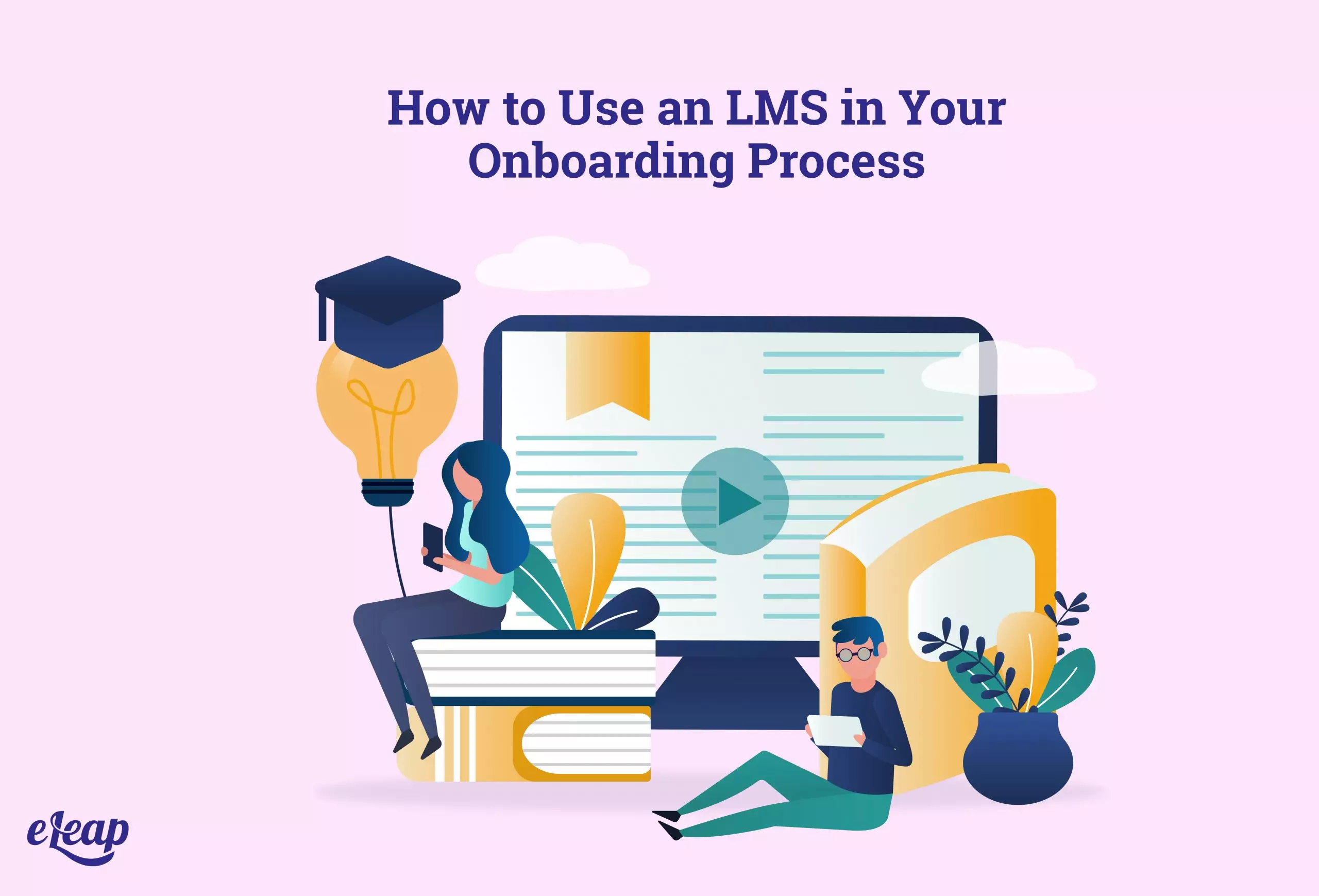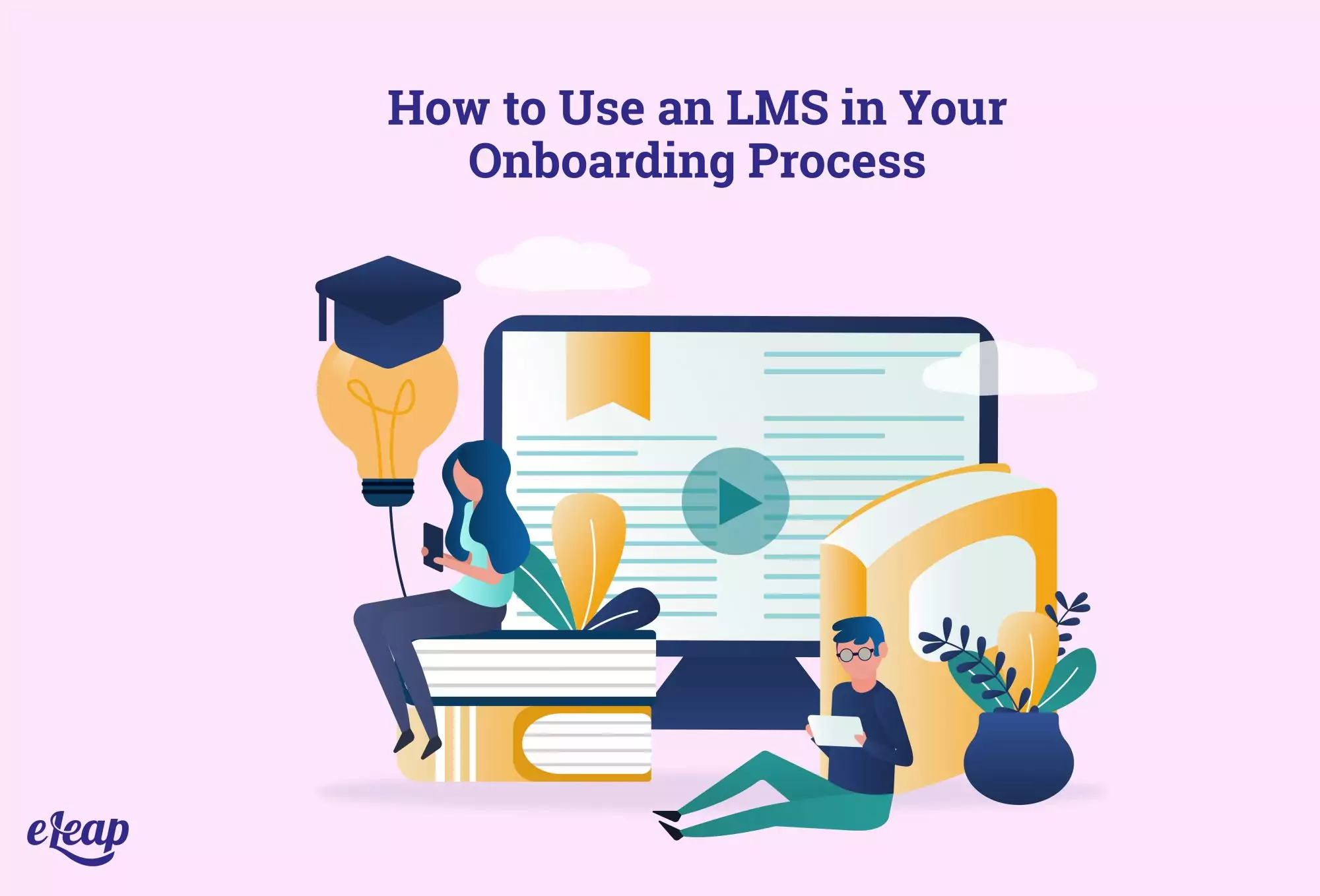How to Use an LMS in Your Onboarding Process

Onboarding can be an arduous process. It’s also critical to get it right. A wrong step here could mean losing that promising new hire, setting you back to step one in the talent hunt. Using solid tools to make sure your onboarding goes well just makes sense. An LMS can be a useful tool to aid your onboarding process.
There’s good news. Your learning management system (LMS) can be an invaluable tool that helps to streamline the onboarding process. However, it’s not as simple as entering a few pieces of information. There’s more that you should know.

Do You Have a Process?
The first thing to consider is your onboarding process. Do you have one? While it might seem strange, one-third of all companies don’t have any defined process for onboarding new employees. They’re hired and then dropped into the position, and then expected to sink or swim. That correlates nicely with the fact that one out of every three new hires leaves their company before the end of their first year.
Without an onboarding process, your new hires aren’t going to get very far. They’re going to feel unsupported, frustrated, and alone. You cannot build a successful business that way.
What to Measure with Your LMS
Using your LMS in the onboarding process is vital, and one of the most important things is to use it for measurements. What should you measure and track? There are several important things, including overall employee retention, funding for onboarding programs, availability of coaching and mentoring, training for new hires, and more.
Of course, once you’ve made your LMS part of the onboarding process, you need to take things several steps further. Below, we’ll walk you through some of the most important things to do with your learning management system during the onboarding process.
Get Them Started Early
Ideally, you’ll acquaint potential new hires with your LMS before they even start their first day. One great idea is to create a “starter pack” of information. This is a virtual package of information that all new hires will need access to, such as information about insurance and other benefits.
Chart a Course
All new hires should complete an initial collection of modules in the LMS. These should be introductory lessons that detail company specifics – think history, achievements, important milestones, your mission, and more. Think of this as a “getting to know you” phase. It helps to provide assessments within these modules to ensure that new hires are retaining important information, as well.
Ensure They’re Onboard with Standards
You’re going to need to cover more than the basics with new hires. Too often, new employees are unaware of what is expected of them in terms of ethics and workplace practices. Use your LMS to teach them during the onboarding process. Have them complete modules dedicated to topics like:
- Workplace ethics
- Work standards
- Corporate policies
- Compliance courses
In short, you need to cover topics that apply to the organization as a whole before they even start their position. This ensures that they understand what’s expected of them and how to behave. Note that if your company culture is radically different from most employers out there – such as having an office-less workspace, or being completely casual all week, that type of information needs to be communicated now, too.
Departmental Specifics
Except in very rare instances, new hires will work within a particular department. Use your LMS to get them acquainted with departmental approaches, techniques, technologies, and other specifics. For instance, does your company use Salesforce? If so, new hires with no experience in using the software will need some training.
Does your sales team use the SPIN technique? Does your marketing team use Marketo or is your online store run on Shopify? These are all examples of things that need to be at least touched on so that new hires are familiar with them.
Identify Skills Gaps Now
Take the opportunity now to identify any skills gaps with your new hires. It’s actually not uncommon for new hires to lack key skills that employers value. Rather than being seen as a detriment, look at this as an opportunity to help that person improve their professional skills while also increasing their loyalty to your company. Identify areas where you can help them improve and become more valuable to your organization, while also becoming more confident in themselves and what they have to offer.
Group Your Learners
Once you move beyond the basics, it’s time to move on to more in-depth learning needs. At this point, you can begin to group your learners (multiple new hires) in ways that matter to your business. You can choose to group them in any way that makes sense for your needs. Some of the options include the following:
- By department
- By skills gap
- By compliance requirements
Assigning new hires to groups allows you to easily handle scheduling, assigning, and tracking their training and then measuring their success.
Are They Ready?
Once new hires have completed a certain level of training, it’s time to let them go and stand on their own. However, instead of just taking the training wheels off, run a readiness drill. Create an assessment based on the employee’s role and responsibilities, with additional questions that pertain to work standards and workplace ethics, and see how they fare.
If they pass, that’s great. They’re ready for prime time. If not, then you can use your LMS to identify areas where they need to have additional training.
In Conclusion
Don’t leave your onboarding process to chance. Don’t throw your new hires into the water and let them sink or swim as they can. It’s your responsibility to support them while they get their bearings and learn how your organization works.
Your LMS should be central to achieving those goals. Not only can your learning management system ensure that new hires have access to essential information, but it can help you track their progress, measure information retention, and even determine when they’re ready to take their place as a full-fledged employee.